A Conversation With Bill Ross (TCHOUPITOULAS)
Bill and Turner Ross made quite a splash when they world premiered their film 45365 at the 2009 SXSW Film Festival. A tender portrait of the Ross Bros.’ hometown, Sidney, Ohio, 45365 plays like a greatest hits of a small town’s most iconic symbols and events—homecoming bonfires, football games, Halloween, the carnival, etc.—capturing this slice of distinctly American pie without ever succumbing to condescension or over-sentimentality. The Ross Bros. apply a poetic editorial rhythm to their verite footage, creating a truly original atmosphere in which the camera becomes an omniscient presence, literally floating between characters and situations, between time and space, to add an air of dreamy reverie to the proceedings. 45365 is a lovely marvel of a picture.
This year, at the 2012 SXSW Film Festival, the Ross Brothers’ struck again with Tchoupitoulas, in which they pointed their cameras at the city where they spent some memorable summers as youngsters. While many films blur the line between fiction and nonfiction, Tchoupitoulas fully erases it. One evening, three young brothers take the Algiers ferry into New Orleans proper for a night of discovery. As they bob and weave through the crowded streets, the Ross Brothers’ camera sidetracks into bars and dance clubs and park benches to provide a fuller portrait of this sleepless town. When the kids miss the last ferry home, the night culminates with an impromptu excursion into an abandoned ship, at which point the film crosses over into a magical realm.
On the heels of the film’s theatrical release in New York City at the IFC Center on Friday, December 7, 2012, thanks to Oscilloscope Pictures, filmmaker Dustin Guy Defa (Bad Fever, Family Nightmare) sat down with Bill Ross to talk about Tchoupitoulas (Turner was in Italy at the time of this discussion). (Michael Tully)
Hammer to Nail: Did you and your brothers go to New Orleans at the same time when you were young?
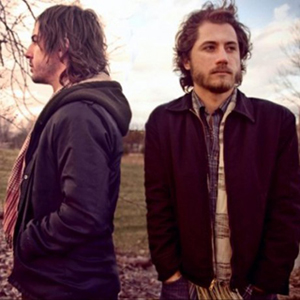 Bill Ross: Yeah, we would wait for our parents to go to sleep and then we would sneak out and try to get into those kinds of places that you see in Tchoupitoulas. The majority of the time we were shut down but there were a couple of times when we managed to sneak in.
Bill Ross: Yeah, we would wait for our parents to go to sleep and then we would sneak out and try to get into those kinds of places that you see in Tchoupitoulas. The majority of the time we were shut down but there were a couple of times when we managed to sneak in.
H2N: How old were you when you first visited New Orleans?
BR: Tiny, before I can remember. When we eventually got into the strip clubs we were probably fourteen.
H2N: So when you initially set out to make this movie, were you thinking that this is a film about being young in New Orleans?
BR: Yeah, the initial idea was to speak to our experience. Not to recreate it but to hopefully find that through other kids. Turner and I sometimes argue about what the impetus was for the film. I knew eventually we were going to shoot a film in New Orleans. I think Turner has a different answer than I do for this, but when I was editing 45365, I had the most vivid dream maybe in my life, I don’t know. I woke up and immediately wrote it all down, pages and pages of it. It was about these kids roaming through the night. It was in L.A. but it was these kids. They weren’t doing anything in particular but it was a fascinating dream. So I sort of took that and said to Turner that we should do something like this in New Orleans and sort of revisit the feelings and images that we have in our heads of when we were kids down there. I think Turner would probably say that it was his idea. [BR laughs] I don’t know what he would say.
H2N: It’s not necessarily luck that you stumbled upon those boys but it’s certainly magic that you found them. This journey that you took with them is magic but then there’s the filmmaking part in constructing that night and whatever other nights you spent with them…it’s primarily one night you spent with them?
BR: Yeah.
H2N: The construction of what you did to make the film an experience…you didn’t just take that night and call that experience the movie. The construction is tricky for me, I need to see the movie again, it’s been awhile, but because it’s so dreamlike, I can’t remember how you went from the boys looking at things to those particular things. I imagine a lot of it is music but I can’t remember how you went from, say, the boys to the ladies. Are they actually looking into a strip club?
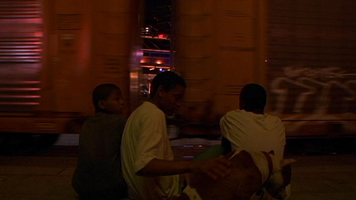 BR: We’re asking that when the kids are looking at something that hopefully you’ll go along with that thinking, that they actually are. The majority of the time they are, and in that particular instance they are, yes, they’re looking into a strip club, and then we bounce into that. You know, when you’re a kid and you’re walking down River Street, you wish…it’s sort of my eight-year-old fantasy to be able to magically go through those doors and see those naked ladies and hear that music and go and dance inside those places.
BR: We’re asking that when the kids are looking at something that hopefully you’ll go along with that thinking, that they actually are. The majority of the time they are, and in that particular instance they are, yes, they’re looking into a strip club, and then we bounce into that. You know, when you’re a kid and you’re walking down River Street, you wish…it’s sort of my eight-year-old fantasy to be able to magically go through those doors and see those naked ladies and hear that music and go and dance inside those places.
H2N: Most of the footage without the kids was shot before you found the boys?
BR: Yes. Like for seven months, we were out every night, me and Turner and Kyle our buddy, and if friends wanted to come along, they would join us. We were constantly looking to find some kids to follow throughout the evening. We’d film all night every night to create a landscape that hopefully a group of kids would populate at some point, so really we had this bank of images to coincide with whatever they got into, for the most part.
H2N: What’s the lineage of your films: how did you come to know that these were the types of movies you wanted to make? Location is obviously crucial to both of your features, you’re seemingly not driven by tackling an overt social issue.
BR: Yeah, no social issue, but we go in with a very strong image of what we want the film to be. Of course that changes, but so far we’ve gotten relatively close to what we were after.
H2N: Would you consider your films to be hybrids? Is that a term that works for you?
BR: I find it very silly that we must put labels on them. Movies have never been a tidy thing, and they shouldn’t be. If we have these strict set of rules, I wouldn’t make movies. The fun of it is that you can go about your work in any way you choose, and this is just the way we’ve chosen to do it. You can call it a fictional film, a documentary, you can call it a hybrid, but that’s not the way we talk about them. To us, they are just movies and they are just what we’re hoping to make. Because we’ve chosen to make these films with real, captured moments, I understand that comes with a certain terminology but…
H2N: I mean, do you think about a lineage for your films? Are there direct influences?
BR: Specifically for Tchoupitoulas, we knew we wanted to make a kids movie in New Orleans. As soon as I started to tell people that, they would say, “Oh, it’s like this movie,” or, “It’s like Little Fugitive or Touki Bouki.” These are films I hadn’t seen yet but then I saw them and I could see the connection.
H2N: Little Fugitive is a perfect connection to this movie.
BR: Halfway through making Tchoup we saw that and we saw that it was doable. People might watch this. That film is amazing.
H2N: What’s nice about Little Fugitive as with Tchoupitoulas is that it’s a living artifact of the time and place. To see Coney Island at that time, it’s important and irreplaceable.
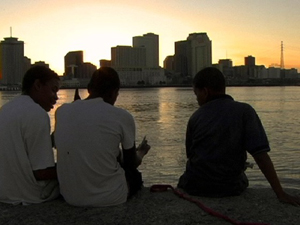 BR: Hopefully 50 years from now, someone will see Tchoupitoulas like we see Little Fugitive, as a nice time capsule of New Orleans right now.
BR: Hopefully 50 years from now, someone will see Tchoupitoulas like we see Little Fugitive, as a nice time capsule of New Orleans right now.
H2N: So let’s talk about William. When you’re watching the movie, at first you don’t know who… I mean, somewhere along the line you catch on that William is sort of the protagonist, the heart and center of the movie. There’s something about the way he speaks: it’s poetic, he’s full of elegant sentences. Yes he’s a real person, obviously, but through the way you’ve told the film, he becomes a very classic American character to me.
BR: We caught him at just the right time.
H2N: How old was he?
BR: He’s 11 in the film. It’s right before the point where you don’t quite have the self-awareness and your spirit hasn’t been beat out of you yet and you haven’t been forced to be tough and cool. You haven’t become that shut-down teenager that’s afraid to speak freely. He had no filter. What he had to say I found to be very fascinating. He and I are still friends. He’ll still talk like that when he’s around me but now he’s cool and he’s tough. But he still has those thoughts. There’s a beauty in him and it’s a shame that it gets kicked out of us. We’d have a more fun existence if we all didn’t have that filter.
H2N: I said this when I saw the film at the True/False Film Festival. I mean, I prefer to see movies in a movie theater and generally they’re better when seen in a theater. But with this film, it’s more than a film, it’s an experience, and on my computer I couldn’t have had the experience that this film deserves. This movie in particular is important to see in a theater. It deserves all those things to have that experience.
BR: The first time I saw it outside my laptop, we were doing the final sound mix. It was already cut. It was shocking to see it in this theater. I was watching it as if I was just a moviegoer. I had no attachment to the film. It was just a pleasure. I know the 3-inch-by-2-inch version but this film I’m not familiar with. It was pretty shocking, I hadn’t had an experience like that before. It was much better. [BR laughs]
H2N: How long did the edit take and how tricky was it to find the right rhythm? When did you find the right balance?
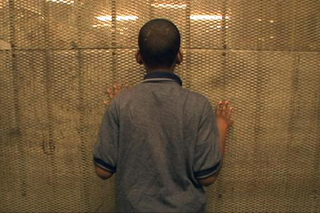 BR: I don’t know how long editing actually took because we were shooting our next film in Texas, and during that I’d edit Tchoup, and then when I moved back to New Orleans, I really dedicated every minute to cutting Tchoup, and that was about six months. I think all told it was probably a year of editing. But you know, you pull your hair out until finally, there’s that click, then you’re just sliding downhill.
BR: I don’t know how long editing actually took because we were shooting our next film in Texas, and during that I’d edit Tchoup, and then when I moved back to New Orleans, I really dedicated every minute to cutting Tchoup, and that was about six months. I think all told it was probably a year of editing. But you know, you pull your hair out until finally, there’s that click, then you’re just sliding downhill.
H2N: I mean, when you shot the boat sequence, did you know that would be the climax of the film?
BR: I had no idea. I cut it together as a scene and I showed it to one of my buddies and he had a look on his face and he said, “Is that the climax of the film?” And I said, “I don’t know.” The film wasn’t formed yet. I didn’t realize what we had until I started showing it to other people. Then it became clear that that was the moment where William goes from being the obnoxious little brother just walking behind the other two to then taking charge of the group. The two oldest are scared and he finds this bravery in the middle of this Scooby Doo episode and takes charge, leads them through the darkness. That’s a wild moment. That was not the breakthrough moment though, in the editing. You’re always trying to fit your favorite shit in there, and once you stop doing that, months and months later, you look at it and you say to yourself: “Okay what are you doing? Look, this is William’s story. Anything that doesn’t add to that needs to go.”
H2N: It’s strange in editing when you’re looking at what used to be your favorite moments, and you can’t believing you’re letting them go…
BR: There were so many things I wanted in there but they didn’t make any sense to keep.
H2N: Did the kids already know about the boat?
BR: Yes but they hadn’t gone on it. And they introduced it to us.
H2N: Do you think a little of William’s bravery came because you were there?
BR: Yes, certainly. William used us throughout. He knew he could get away with so much because he could always blame it on us. There’s a lot of footage of him sneaking into places and getting into trouble, and he’d be like, “I’m making a movie with these two white guys, it’s their fault.” Of course I was happy to be the scapegoat.
H2N: I’m interested about the sound. How much post-work did you have to do on it, especially on the dialogue? Did you have trouble cleaning that stuff up?
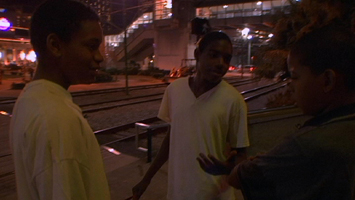 BR: Yes. Lawrence Everson is our post-sound man and he’s done the last two films. I do the design and then he will take it and polish everything. He’s a magician. We give him this hissy distorted crap and then he brings it out polished. And he does a little bit of design as well. Whatever he does I don’t understand. It’s wonderful.
BR: Yes. Lawrence Everson is our post-sound man and he’s done the last two films. I do the design and then he will take it and polish everything. He’s a magician. We give him this hissy distorted crap and then he brings it out polished. And he does a little bit of design as well. Whatever he does I don’t understand. It’s wonderful.
H2N: It’s huge for the movie. And what about the music? You guys are so fearless with the music because you just choose the songs without… well, you’re either fearless or you’re stubborn or you’re both, because you get married to a song, right? You put the music in there not knowing if you’re going to get the rights. You did that with 45365 and it didn’t get released.
BR: Well we could have gotten the rights to that but we got lied to by the distributor. That film should be out on DVD. There’s a way to make this stuff work. But the distributor said they would take care of it but it was just a ploy. So yeah, had we gone about it the right way, we would have raised the money, we would have cleared those songs. We went about it the right way this time, we cleared the songs.
H2N: But even though you learned it with the first one, still with Tchoupitoulas you risked not being able to get the rights. Just by the nature of watching the movie, which I saw before you had the rights, it seemed like you were dedicated to these songs. Like you couldn’t imagine the movie without most of them.
BR: Yes, I’m very stubborn on that. I want these films to be exactly what I want.
H2N: The music choices in this film are as important as everything else.
BR: Absolutely, and I will fight until I am pulled out of the ring to get those songs in there, and if we have raise a hundred thousand dollars, we’ll figure out a way to do that. I want to be able to age with these films. If we end up saying, “You know, we should have that song in there”… I don’t want to be kicking myself when I’m 60.
H2N: You raised $35,000 on Kickstarter to get the rights. It’s hard to imagine many filmmakers would do that for music, they would want to raise that money for something else. It’s not your money but you could use that money for something else. I mean, other parts of your movie didn’t cost that much money.
BR: Nothing cost that much. It’s all in the music. I guess if I wasn’t as stubborn, I mean maybe rent at the first of the month wouldn’t be so stressful. But fuck it, you got to do it. No half-stepping.
— Dustin Guy Defa








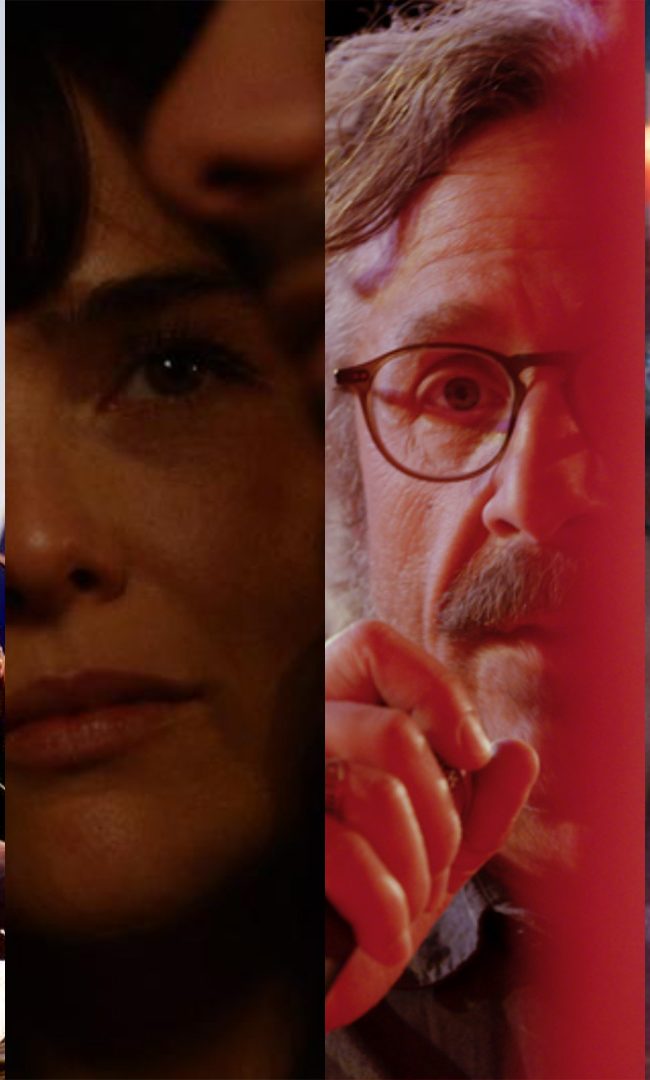
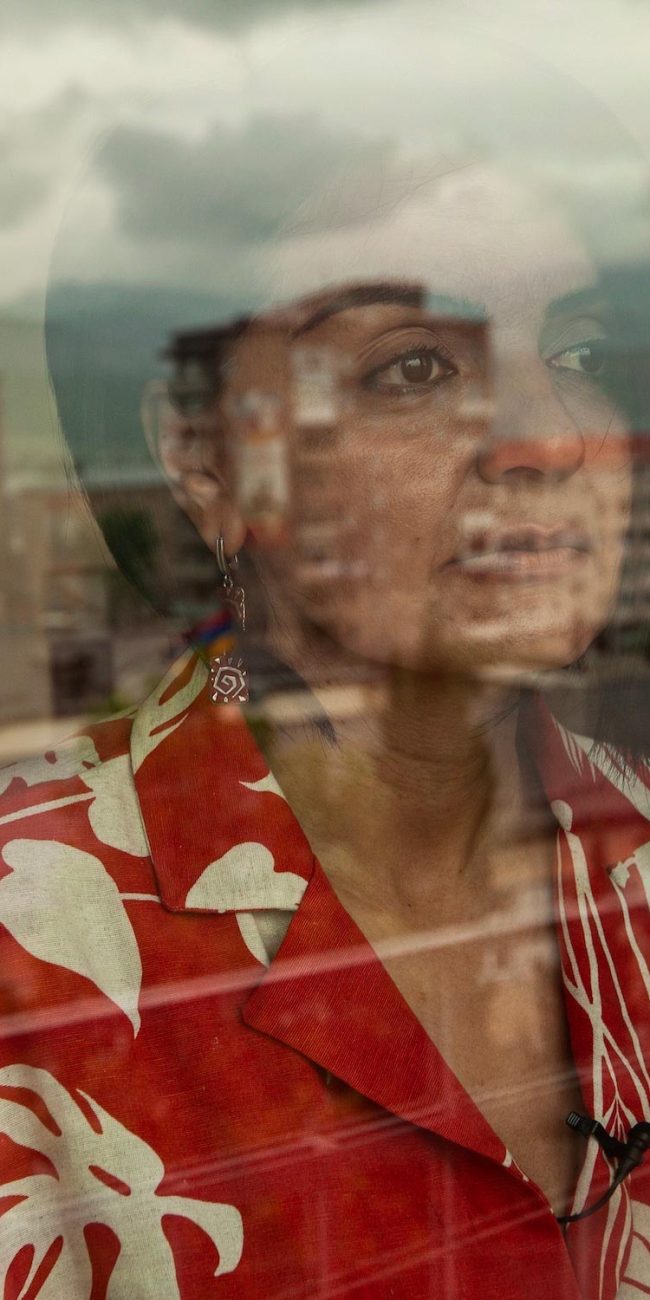


Pingback: HOME VIDEO PICKS – Hammer to Nail